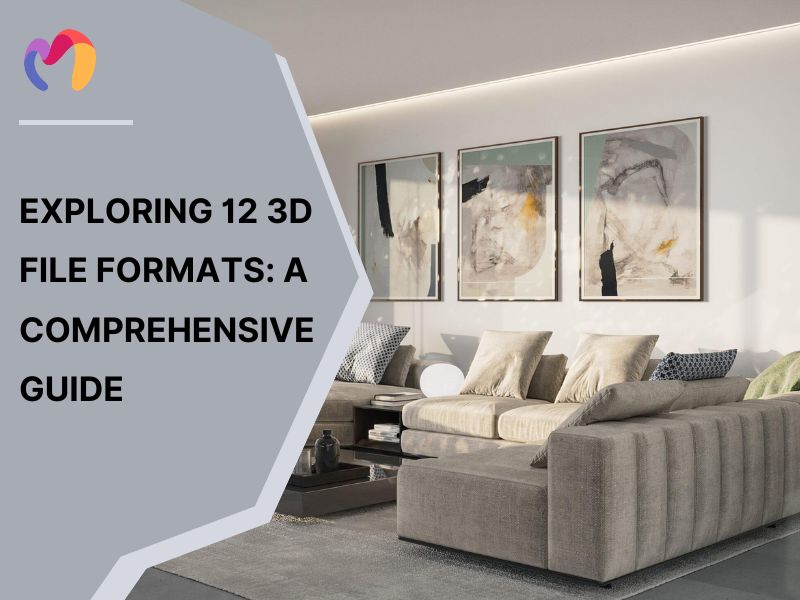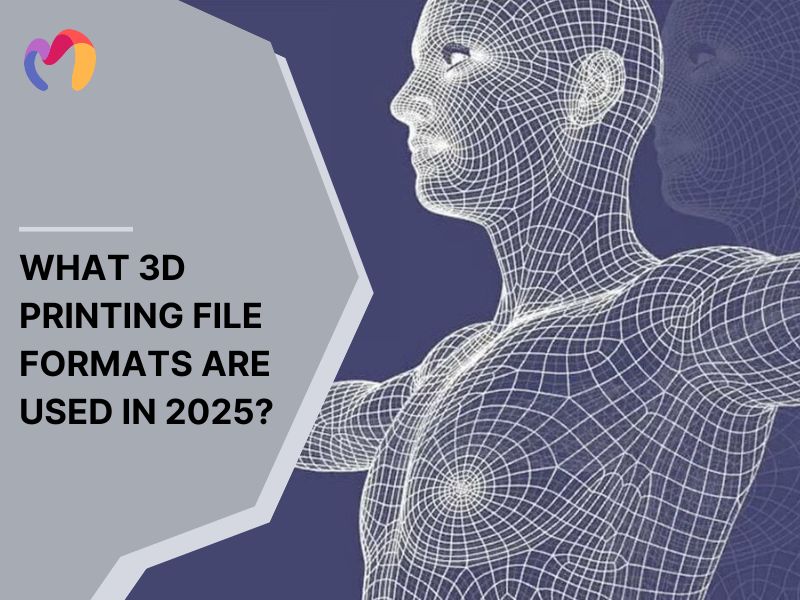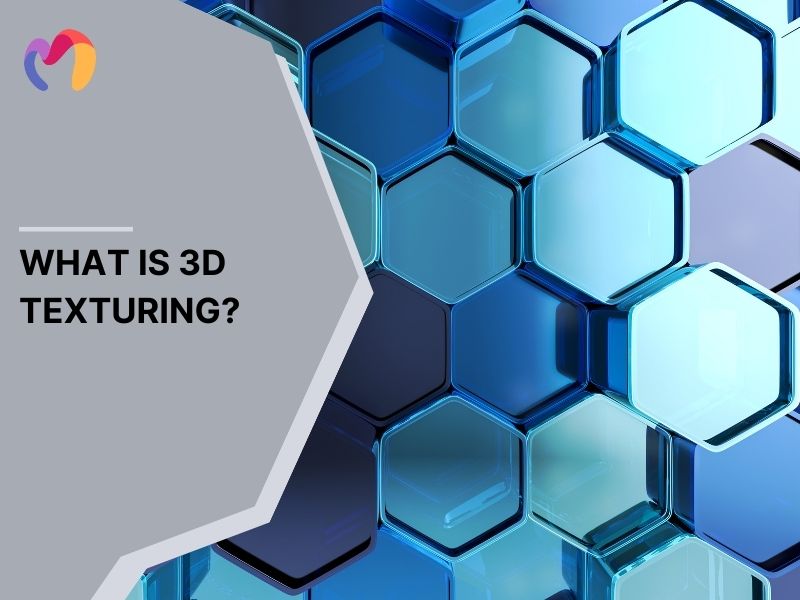What Is A Polygon in 3D Modeling? Compare High-Poly Vs Low-Poly Ones
A polygon in 3D modeling is a basic geometric shape made up of vertices, edges, and faces that serves as the fundamental building block for creating three-dimensional digital objects. These connected geometric elements work together to form complex surfaces and structures in virtual 3D space. When searching for information about polygons in 3D modeling, users often face challenges understanding the practical differences between high-poly and low-poly models, their applications, and optimization strategies for different projects.
For those wondering “What is Poly Models in 3D modelling?”, this guide covers polygonal modeling basics, techniques, and optimization strategies, with applications in architecture, film, and game development. It explores emerging trends and addresses common questions about polygon count and performance.
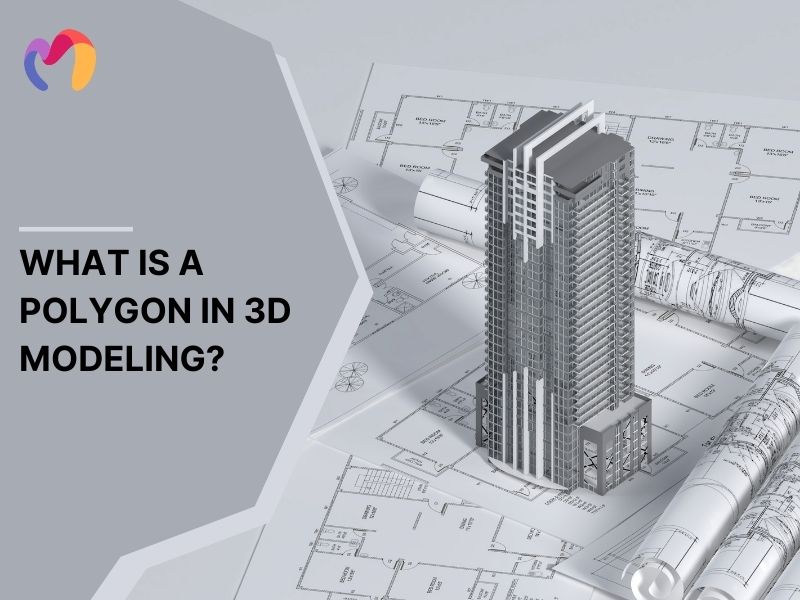
1. What Are Poly Models in 3D Modeling?
Poly models in 3D form the foundation of digital objects, combining vertices, edges, and surfaces to create complex, detailed structures used in a variety of industries. First, let’s learn some basic knowledge about poly models:
1.1. Definition
Poly models create the core structure of 3D objects through connected geometric shapes. These digital meshes combine vertices, edges, and faces to build detailed surfaces that define objects in three-dimensional space. The process transforms basic shapes into complete 3D structures through precise connectivity and arrangement.
1.2. Types of Poly Models
The following comparison highlights the key differences between the basic model types including high-poly and low-poly models:
|
Feature |
High-Poly Models | Low-Poly Models |
| Polygon Count | Thousands to millions | Hundreds to thousands |
| Detail Level | Highly detailed surfaces | Basic geometric forms |
| Performance | Resource-intensive | Lightweight and efficient |
| Best Use Cases | Static renders, films | Games, real-time applications |
| File Size | Large files (100MB+) | Small files (1-10MB) |
| Render Speed | Slower rendering |
Quick rendering |
>>> See more: What Is The Difference Between Low Poly and High Poly in 3D Modeling?
1.3. Factors to Consider When Selecting Poly Model Type
The choice between polygon model types impacts project success and performance outcomes. High-poly and low-poly models serve distinct purposes, with selection depending on core project needs.
High-poly models excel in static presentations:
- Architectural renders
- Product showcases
- Marketing materials
- Portfolio pieces
Low-poly models power interactive experiences:
- Video games
- Virtual reality
- Mobile applications
- Real-time simulations
Decision Framework:
- Project Scope: Define the project’s objectives to determine whether high-poly or low-poly models are needed. High-poly suits detailed, static visuals (e.g., marketing), while low-poly works best for interactive applications (e.g., games, VR).
- Technical Requirements: Consider platform limitations like processing power and memory. Low-poly models are ideal for resource-constrained platforms (e.g., mobile), while high-poly models are better for powerful systems (e.g., high-end renders, VR).
- User Experience: Focus on performance, visual quality, and interaction. Low-poly models are essential for smooth, real-time interaction, while high-poly models are acceptable for non-interactive, high-detail experiences. Balancing these ensures optimal user satisfaction.
Each project demands specific polygon optimization based on these elements. Match model complexity to platform capabilities while meeting project goals. Consider future scaling needs when selecting model types.
Key success metrics include load time performance, ensuring fast model loading; visual fidelity, balancing detail with quality; resource efficiency, optimizing system resources; user satisfaction, focusing on smooth interaction; and project sustainability, ensuring long-term viability and scalability. This framework ensures optimal polygon model selection across diverse applications and platforms.
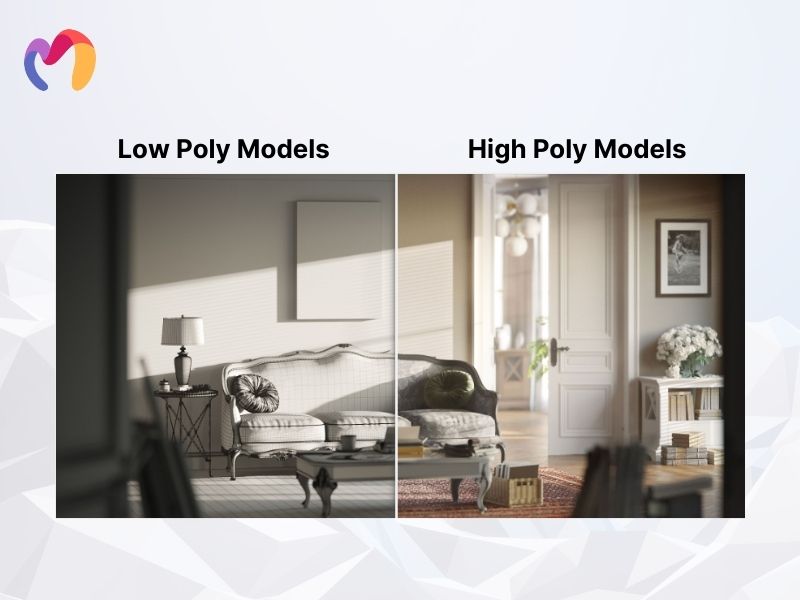
2. Fundamental Techniques in Polygonal Modeling
Polygonal modeling relies heavily on two foundational techniques: extrusion and subdivision. These methods form the cornerstone of the box modeling approach, enabling artists to create everything from simple geometric shapes to complex organic forms.
1. Extrusion
Extrusion serves as a primary tool in 3D modeling, allowing artists to extend and manipulate faces to create three-dimensional forms. This versatile technique works by creating new faces connected to existing edges, effectively growing the model in any desired direction.
When working with extrusion, modelers can manipulate meshes in two distinct ways: inward collapse or outward extension. The technique proves particularly powerful in architectural and hard-surface modeling, where precise geometric control is essential. Extrusion applications manifest in two primary forms:
- Base Shape Extrusion transforms simple geometric forms into complex structures. For instance, when modeling a house, artists might begin with a pyramid shape, extruding its base downward to create walls. Similarly, furniture elements like table legs emerge from strategic extrusion of basic shapes, demonstrating how this technique bridges simple primitives and complex final forms.
- Edge Extrusion enables precise control over model topology through edge manipulation. This approach, crucial in contour modeling, involves duplicating and manipulating edges while automatically generating connecting faces. The result offers unprecedented control over surface flow and model development.
2. Subdivision
Subdivision stands as a sophisticated technique for achieving smooth, detailed surfaces in 3D models. Starting from low-resolution primitive shapes, this method systematically divides faces into smaller components, typically splitting each face into four parts. This process proves essential for creating finished models with refined surface quality. The subdivision approach encompasses three distinct methodologies:
- Uniform Subdivision applies consistent face division across the entire model surface. This linear approach, where each face splits into four smaller faces, excels at creating overall surface smoothness and eliminating harsh edges. It’s particularly effective for organic models requiring consistent surface refinement.
- Selective Subdivision targets specific model areas through strategic edge loop placement. This focused approach allows artists to add detail precisely where needed – such as around character features like eyes and lips – while maintaining lower resolution in less prominent areas. The result optimizes both detail and performance.
- Combined Subdivision leverages both uniform and selective techniques. Artists often place strategic edge loops before applying uniform subdivision, allowing them to maintain sharp edges where desired while achieving smooth transitions elsewhere. This hybrid approach offers maximum control over the final surface quality.
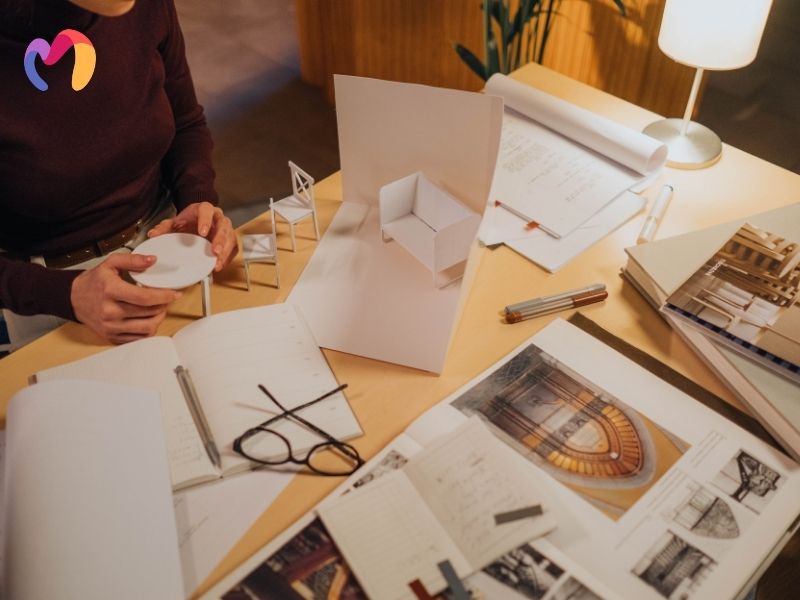

3. Industry Applications of Poly Models
Poly modeling drives innovation across multiple industries, shaping how professionals create and optimize 3D content. From architecture to gaming, teams select specific poly counts to match their project requirements.
Poly Models in Architecture and Product Design
Polygon modeling is transforming digital blueprint creation in architecture and product design. It allows precise visualization of structures and products before construction, with high-poly models detailing buildings and materials, while low-poly models are used for interactive displays. This technique aids real estate teams in showcasing properties and manufacturers in validating designs, optimizing both design accuracy and presentation efficiency.
Polygon modeling enables precise visualization for architecture and product design, enhancing planning
Poly Models in Film and Animation
Film studios use poly modeling to create characters and environments, blending high-poly models for close-up shots and low-poly models for background elements. This approach helps studios like Pixar and DreamWorks manage production resources while maintaining visual impact. Character modeling focuses on details like faces and movement to match real-world physics, delivering the polish expected in cinematic experiences.
Poly Models in Video Game Development
Game developers combine high-poly and low-poly models to optimize both visuals and performance. High-poly designs are used for promotional materials and cutscenes, while low-poly models are employed for gameplay to ensure smooth performance. Dynamic Level of Detail (LOD) systems adjust polygon density based on viewing distance and hardware capabilities, enhancing visual fidelity without compromising frame rates.
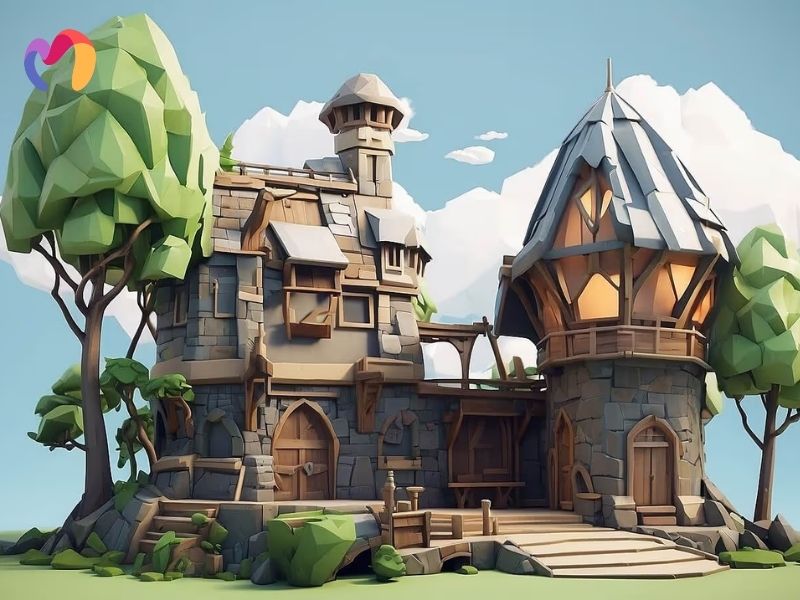

4. Common Mistakes to Avoid
Here are the critical mistakes that both beginners and experienced modelers should actively avoid:
- Leaving Open Vertices or Faces: Open geometry can cause rendering glitches and issues with texture mapping. Always ensure all vertices and faces are properly connected. Use cleanup tools, like merging stray vertices or filling gaps, to create a seamless model.
- Poor Naming Conventions: An organized naming system is crucial for managing complex projects. Use descriptive, unique names for different parts of your model to make navigation and updates easier, especially when collaborating with others.
- Premature Subdivision: Avoid subdividing your model too early in the process. Focus on establishing a strong foundational shape using primary forms. Once the base is solid, you can progressively add details. Early subdivision can result in a cumbersome mesh that’s difficult to modify.
- Overcomplicating Topology: Simplicity is key to effective topology. Avoid unnecessary edge loops or excessive polygons that can complicate your model. A clean, efficient mesh not only improves performance but also ensures smoother animations and easier adjustments.
- Neglecting Subdivision: Proper use of subdivision tools can refine and smooth your model. However, avoid going overboard, as excessive subdivisions can inflate polygon counts and make your model inefficient. Strike a balance to maintain both visual quality and performance.
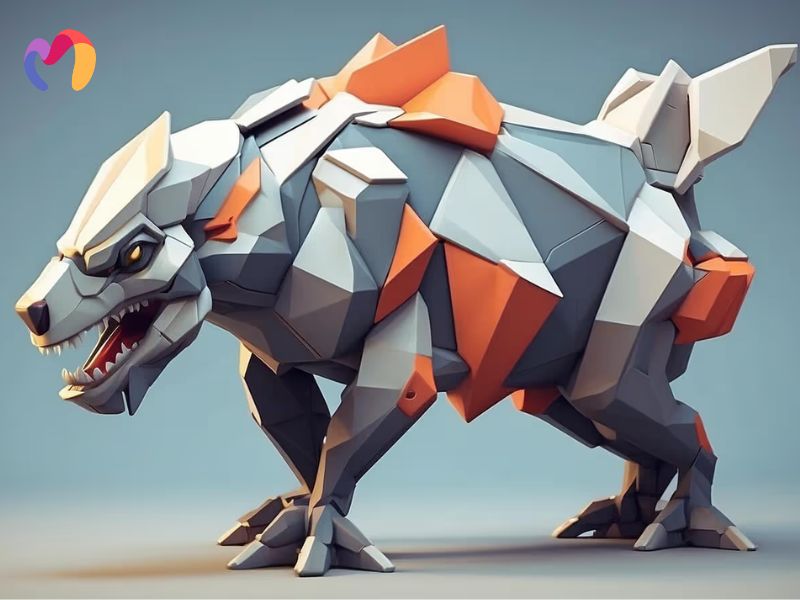

5. Future Trends in Poly Modeling
AI modeling tools transform the 3D landscape by generating complex assets at unprecedented speeds. These systems produce both high-poly and low-poly models while maintaining industry standards. Real-time rendering now displays intricate models across platforms with seamless performance.
Hardware evolution eliminates traditional barriers between high-poly and low-poly applications. Current GPUs process detailed models in real-time, while cloud solutions make intensive rendering cost-effective.
This tech surge enables creators to build sophisticated models that perform consistently across platforms. The blend of AI assistance and improved hardware creates new possibilities for 3D modeling, pushing creative boundaries while ensuring practical implementation.
6. Frequently Asked Questions
What are the three basic elements of polygonal modeling?
The three basic elements are vertices (points), edges (lines connecting vertices), and faces (surfaces between edges).
How does polygon count affect model performance?
Higher polygon counts provide more detail but require more processing power and memory, potentially impacting rendering speed and real-time performance.
What is retopology in polygon modeling?
Retopology is the process of optimizing a high-poly model’s mesh structure to create an efficient, low-poly version while maintaining visual quality.
7. Conclusion
Polygonal modeling stands as the cornerstone of 3D design, offering versatile solutions for creating digital assets across various industries. When exploring what is Poly Models in 3D modelling, it’s essential to understand the distinction between high-poly and low-poly models, as well as their impact on performance and visual fidelity. Throughout this guide, we’ve examined essential modeling techniques, optimization strategies, and industry-specific applications. Understanding these concepts is crucial for creating efficient, visually appealing 3D models that meet specific project requirements.
For professional 3D modeling services and expert guidance in creating optimized polygon models, 3DMAXTER offers comprehensive solutions tailored to your needs. Our team of experienced artists and technicians can help bring your vision to life while ensuring optimal performance and visual quality. Visit 3DMAXTER today to explore how we can elevate your 3D modeling projects to the next level.
3DMAXTER LTD
- Email: [email protected]
- Phone: +1 (929) 450-2898
- Address: 95-38 Queens Blvd, Rego Park, NY 11374, USA
Thank you for choosing 3DMAXTER LTD.
